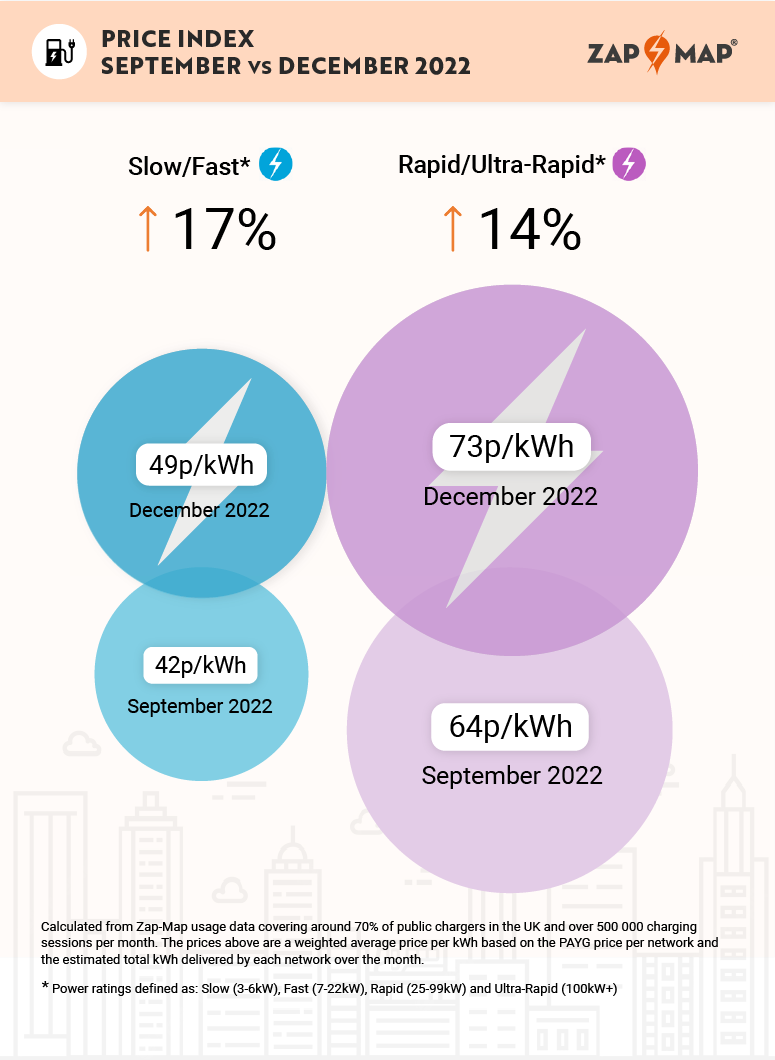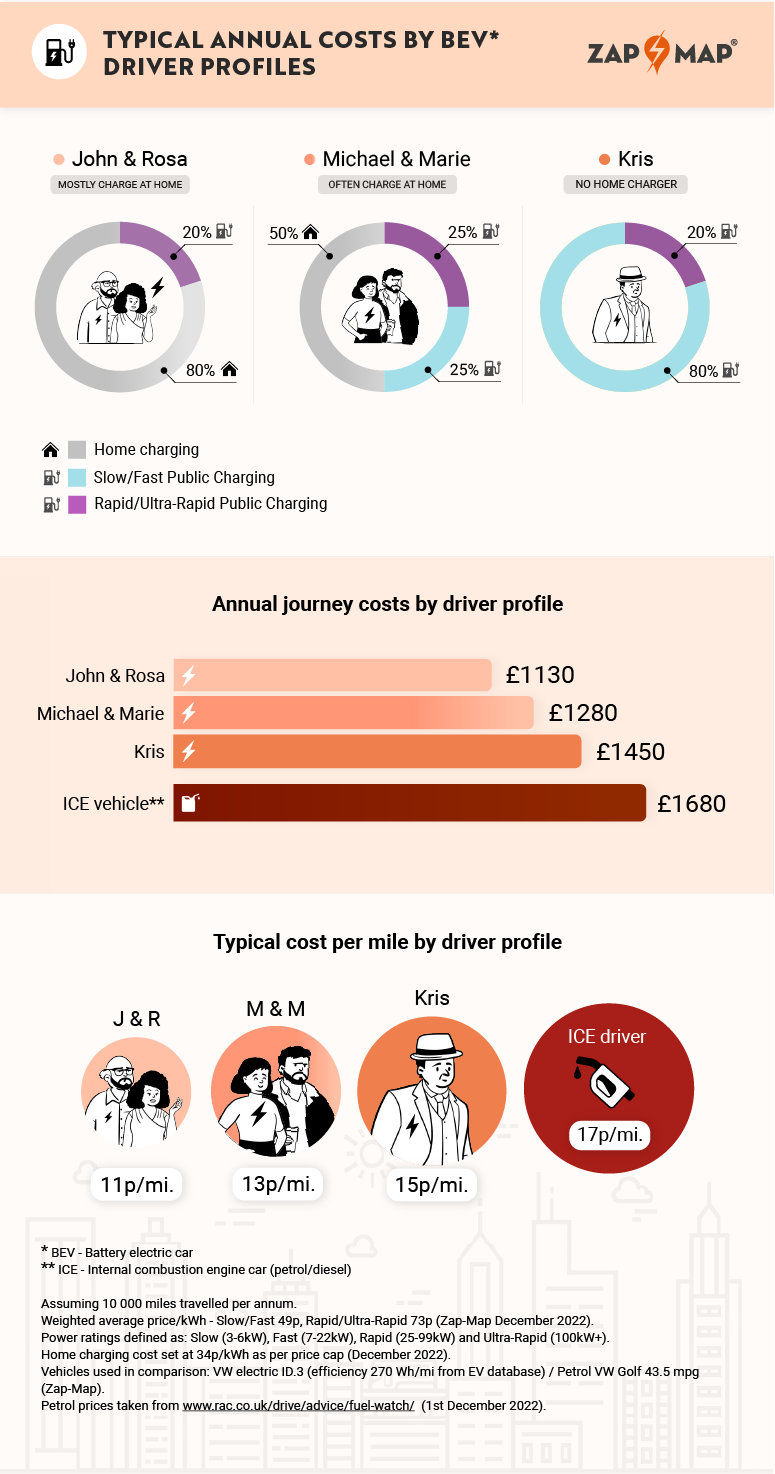The price drivers are paying to charge an electric vehicle (EV) on the public network has increased by more than 15% overall since September 2022, new analysis from Zap-Map suggests.
But, with the price of charging varies substantially across different types of chargers, Zap-Map says that EV drivers using a mix of different charging options can still save money compared to refuelling a petrol or diesel car.
Zap-Map analysed more than 500,000 charging sessions per month, across approximately 70% of the charge points in the UK.
The findings show that, in December 2022, the average weighted price of charging at a slow or fast charger – mostly found on residential streets or at destinations such as supermarkets or car parks – was 49p/kWh in the UK.
That equates to a 17%, from 42p/kWh in September 2022, to use either a slow (3-6kW) or fast (7-22kW) charger.
The price for a rapid or ultra-rapid charge point, meanwhile, typically used for high-speed, en-route charging, was 73p/kWh.
Prices for rapid (25-99kW) and ultra-rapid (100kW+) chargers were up 14% in the same period, from 64p/kWh.
Despite this, says Zap-Map, it is still cheaper to run an EV than an internal combustion engine (ICE) vehicle.
For instance, a driver charging at home 80% of the time would save around £550 per year versus an ICE car.
Meanwhile, a driver charging at home 50% of the time and splitting their public charging equally across slow/fast and rapid/ultra-rapid options would save £400 per year.
Melanie Shufflebotham, co-founder and chief operating officer at Zap-Map, said: “Zap-Map’s price index keeps track of the price that EV drivers pay when out and about, as well as how prices vary across the different types of chargers. This helps drivers to seek out the cheapest charging options and keep an eye on costs.
“Although electricity prices have risen significantly, the price index shows that you can still save money while being kinder to the planet.”

A driver charging solely on the public network using a combination of slow/fast and rapid/ultra-rapid charging would save around £230 per year.
At present, the majority of EV drivers are able to charge at home. According to Zap-Map’s latest EV Charging Survey – which saw responses from more than 4,300 EV drivers across the UK – 84% of respondents have access to a home charger.
However, as more and more drivers make the switch to electric, the proportion of drivers without access to a home charger will only increase.
“With the continued energy crisis, we expect the cost of charging to remain at a higher level, with EV drivers increasingly looking to seek out the most cost-effective combination of home charging and different public charging options,” Shufflebotham added.
Through the data collected to drive the Zap-Map app, the price index tracks more than 500,000 charging sessions each month and updates to charge point operator prices in order to provide the latest public EV charging prices on a quarterly basis.
Separate research from Mina suggests that home EV charging costs have risen by 4p per kWh since the end of last summer to an average of 30p per kWh.
However, the figures, from Mina’s EV Report, show that EV drivers using the public charge point network saw an average price rise of 14p to 70p per kWh over the same period.
Mina’s data across more than 60,000 charging events showed the average price of home electricity for EVs stayed level during September at 26p, then rose to 30p in October, and 31p in November.























Login to comment
Comments
No comments have been made yet.